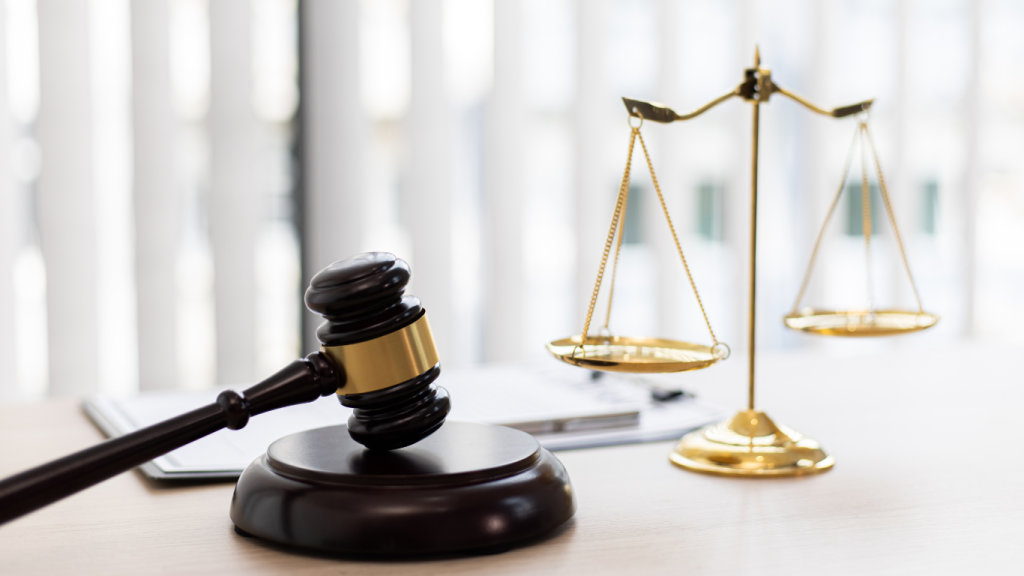What is Intellectual Property?
Intellectual property is a broad category that describes a set of intangible assets which are owned by a company, business, or individual. These assets can bring many benefits to a company and are crucial to keep protected from competitors. There are many types of intellectual properties, which can be legally protected to keep them from unauthorised use.
Table of Contents
- Intellectual Property Definition
- Key Takeaways
- Types of Intellectual Property
- Patents
- Copyright
- Trademarks
- Trade Secrets
- Who Owns Intellectual Property?
- What Are The Benefits of IP?
- Intellectual Property Infringement
- Who is Responsible For Protecting an IP?
- How to Protect Your IP
- Protection You Need to Apply For
- Automatic IP Protection
- Minesoft Develop Cutting-Edge IP Solutions
- FAQ
Intellectual Property Definition

Intellectual property rights are the privileges given to individuals in relation to creations they have come up with in their mind. Typically, these rights give the creators an exclusive authority over the utilisation of their own creations for a specific duration, depending on the type of intellectual property that it is.
Key Takeaways
- The four main types of intellectual property are: Patents, Copyright, Trademarks, and Designs.
- Ownership of intellectual property is usually given to the creators of the IP. The ownership of an IP can be transferred via a legal process. Employment contracts may assign ownership to employers.
- Intellectual Property can offer many benefits, such as standing out from competitors, building a brand’s value, generating revenue through licensing or sales, and increasing your credibility for financing from lenders.
- Intellectual Property infringement occurs when the unauthorised use of an IP happens. The conditions for infringement depend on the type of intellectual property.
- You can protect your intellectual property by registering your trademarks, designs and patents. Copyright works are automatically protected on creation, but having proof of ownership is recommended.
- Depending on the type of intellectual property, the legal protections can expire after a certain period of time. Some IP’s, like trademarks, last forever.
- Intellectual property laws differ depending on your jurisdiction, for example, law in the UK vs law in the US.
Types of Intellectual Property
Patents
A patent is a type of intellectual property right that gives you the exclusive right to an invention, product, or process. Usually, a patent gives an inventor the right to choose how their idea can be used by others, if at all. In exchange, the patent holder has to make the technical information about the invention publicly available, which can be found in the published patent documentation.
Copyright

Copyright refers to the legal concept that grants creators the exclusive rights to their literary and artistic creations. This encompasses a wide range of works, including but not limited to books, music, paintings, sculptures, films, computer programs, databases, advertisements, maps, and technical drawings.
Trademarks
A trademark is a distinctive symbol or sign that allows for identification and differentiation of goods or services provided by one business entity from those offered by others. The origins of trademarks trace back to ancient times, where artisans would imprint their signature or personal “mark” on their products.
Franchises
A franchise is an agreement where a company, individual, or party, purchases the rights to use a franchisor’s name, trademark, proprietary knowledge, and processes, becoming what is known as a franchisee.
The franchisee is often a small business owner or entrepreneur, and operates the store or franchise and is authorised to sell the company’s products or offer its services under their established brand. In exchange for these rights, the franchisee pays a start-up fee and ongoing licensing fees to the franchisor. A well-known company that utilises the franchise business model is McDonald’s Corporation.
Industrial Designs
An industrial design pertains to the visual or aesthetic attributes of a product. It encompasses both the three-dimensional characteristics, such as the shape or surface of an article, as well as the two-dimensional aspects, including patterns, lines, or colours.
Geographical Indications
Geographical indications and appellations of origin are labels utilised on products that originate from a particular geographic region and possess distinct qualities, reputation, or characteristics that are essentially linked to that place of origin. Typically, a geographical indication includes the name of the specific location where the goods originate.
Trade Secrets
Trade secrets are intellectual property rights that pertain to confidential information, capable of being sold or licensed. The unauthorised acquisition, use, or disclosure of such confidential information by others in a manner inconsistent with fair commercial practices is considered an unfair practice and a breach of trade secret protection.
Passing Off
Passing off is a law that safeguards the reputation and goodwill of a business, preventing the sale of goods under false pretences as being associated with another business. Its purpose is to shield traders from unfair competition by their rivals and also safeguard consumers from confusion regarding the origin of goods and services they encounter.
While passing off offers protection to both consumers and traders, only the trader can initiate legal action, and it can only be pursued against a defendant engaged in commercial activities. Registering a business name is not a prerequisite for acting against those who later engage in trading under the same or a very similar name.
Digital Assets
In an increasingly digital world, digital assets are also getting recognised as intellectual property. This can include algorithms, software, code, and other online digital content.
Who Owns Intellectual Property?

When it comes to intellectual property, the person who created the work is considered to be its owner. However, the ownership rights of IP can be determined differently, depending on the type of intellectual property and the circumstances it was created under.
For example, employers will often have clauses in their employment contracts that state if an employee invents or develops an IP, the employer will automatically become the owner of the IP. It is also possible to transfer intellectual property ownership rights to other parties.
Transferring IP Ownership Rights
It is possible to transfer intellectual property to a different party, this has to be done via a legal process. By law, the transfer requires a written document, which must be signed by the current IP owner. If you’re looking to share part of your IP, there are various arrangements that can be made, it is recommended that you speak to an intellectual property lawyer to get advice on the best course of action.
What Are The Benefits of IP?
Registering and protecting your Intellectual Property can give you many benefits and advantages. Here are a few key benefits of IP protection:
Stand Out From Your Competitors

In the business landscape, having a unique selling point that sets you apart from the competition can help you break through the crowd, boosting brand awareness and revenue. Intellectual property can help massively with this, as logos, slogans, designs and more are noticed by customers and help to build up your business’ perceived value.
Having a unique IP can help to differentiate yourself from competitors and make your brand more appealing to your target market. Protecting your IP can stop competitors from trying to emulate your business, keeping your level of distinctiveness as high as possible.
Raise Your Business’ Market Value
One of the benefits to having intellectual property is the potential to generate revenue for your business through various means. By licensing your IP, you can lend it to different businesses and receive a steady income or royalties in return. Another avenue for profit is selling your IP products and services for a predetermined sum, which can boost your earnings and enhance your market presence.
Additionally, safeguarding your intellectual property assets by registering and protecting them can substantially increase the value of your business if you decide to sell it or engage in an acquisition or merger.
It’s Easier to Get Financing
Having IP protection in place makes it much easier to receive loans from finance lenders, as the protection increases your credibility. Your intellectual property can also be used as collateral as well in lending situations. Before agreeing to use your IP as potential collateral for a lender, think about the implications if you lost the IP due to not being able to pay the loan back.
Intellectual Property Infringement

Intellectual Property Rights (IPR) accompany intellectual property and serve as a safeguard against unauthorised use. These rights empower owners to prohibit others from reproducing, imitating, or exploiting their creations. Intellectual property law is different depending on the jurisdiction, for example, procedures are different in the US compared to the UK.
What is IP Infringement?
Neglecting to protect intellectual property can lead to significant impacts on a small business. IP infringement occurs when someone utilises your IP without authorisation, such as selling products protected by your patent or employing a trademark that you have registered.
Who is Responsible For Protecting an IP?
As the owner, it is your responsibility to protect your intellectual property and take appropriate measures against unauthorised usage. There are various steps you can take to halt the other party’s infringement, including pursuing an agreement such as a licensing deal. Mediation can also be employed as an alternative method to resolve the dispute before resorting to legal action.
It is crucial to remember that seeking legal advice is always advisable before contacting the party in question or initiating any action. In certain instances, reporting IP violations to Trading Standards may also be an option.
Patent Infringement
In the case of patents, infringement occurs when someone utilises a legally protected patent without permission. Patents filed before June 8, 1995, remained valid for 17 years, while those filed after that date have a validity period of 20 years. Once a patent expires, its details become publicly accessible.
Copyright Infringement
Copyright violations take place when an unauthorised party reproduces part or all of an original work, such as artwork, music, or a novel. The duplicated content does not have to be an exact replica to qualify as infringement. The duration of copyright’s protection in the UK ranges from 25 years after its initial creation, to 70 years after the author’s death, in the case of written works.
Trademark Infringement
Similarly, trademark infringement arises when an unauthorised entity uses a licensed trademark or a mark resembling it. For instance, a competitor may employ a similar mark to disrupt business and attract the customer base of its rival. Additionally, unrelated businesses might utilise identical or similar marks to capitalise on the strong brand images of other companies. Trademarks need to be renewed every 10 years to make sure you remain protected.
Trade Secrets Infringement
Trade secrets are often protected through Non-Disclosure Agreements (NDA). If a party breaches the agreement and discloses any or all of the trade secret to uninvolved parties, they have infringed upon the trade secret. However, trade secret infringement can still occur even without an NDA in place.
How to Protect Your IP
Depending on the type of intellectual property, you may need to apply and register your IP before you can protect it.
Protection You Need to Apply For
Trademarks
Generally, it is good practice to make sure you register any names for your businesses, brands and products. Additionally, registering logos, slogans and jingles is a good idea too. The application process can take up to four months before a trademark is fully registered.
More recently included in trademark registration are digital trademarks. This can include domain names and social media handles.
Registered Designs
Registered designs protect the visual aspects of a product, encompassing its shape, packaging, patterns, colours, and decorations. Without registration, nothing prevents another small business from producing and selling a product that looks similar. The application process for registering a design typically takes one month. To be eligible, your design must be original, non-offensive, devoid of protected emblems or flags, and not relate to the functionality or invention of a product (for which a patent would be required).
Patents
Registering a patent means that any inventions or products you create are protected. Patent protection is available for products and processes that meet 4 requirements:
- It is new
- It involves an inventive step
- Is capable of industrial application
- Is not an excluded item
It can take around five years for a decision to be made regarding the registering of your patent. The IPO has to investigate the evidence you’ve submitted and ensure the patent doesn’t already exist.
Automatic IP Protection
The other ‘main’ type of intellectual property is Copyright, which is automatically protected after you have created the works. As such, there is no need to apply or register a written work for copyright protection. It is recommended to have proof that you have created a certain work, so there can be no disputes about your ownership.
Minesoft Develop Cutting-Edge IP Solutions
It is more important than ever to stay ahead of your competitors. Developing and utilising your intellectual property can give you the competitive edge your business needs. In order to maximise your advantages, formulating an effective IP strategy and keeping your IPs protected is key.
Minesoft develops leading patent search software, such as PatBase, which lets businesses to search for, analyse, and track patents, helping you to make the best decisions for your intellectual properties. Or now you can use Minesoft IPShare, designed to make it easier to collaborate on projects related to IP.
Discover how Minesoft can help to improve how you use your intellectual properties by requesting a demo today!
FAQ
What are the 4 types of intellectual property?
The 4 main types of intellectual property are Trademarks, Patents, Trade Secrets, and Copyrights. These IPs are invaluable to a business, and understanding how you use and protect them can give you a competitive advantage in your industry.
Can intellectual property be legally protected?
Every type of intellectual property can be protected via various legal processes. Some IPs like copyrights are automatically protected upon creation, whereas others like patents and trademarks need to be officially registered before you can receive legal protection.
There are many steps that can be taken to enforce the protection of your IP depending on the situation, but generally consulting an IP lawyer is recommended to find the best course of action.


Comments are closed.